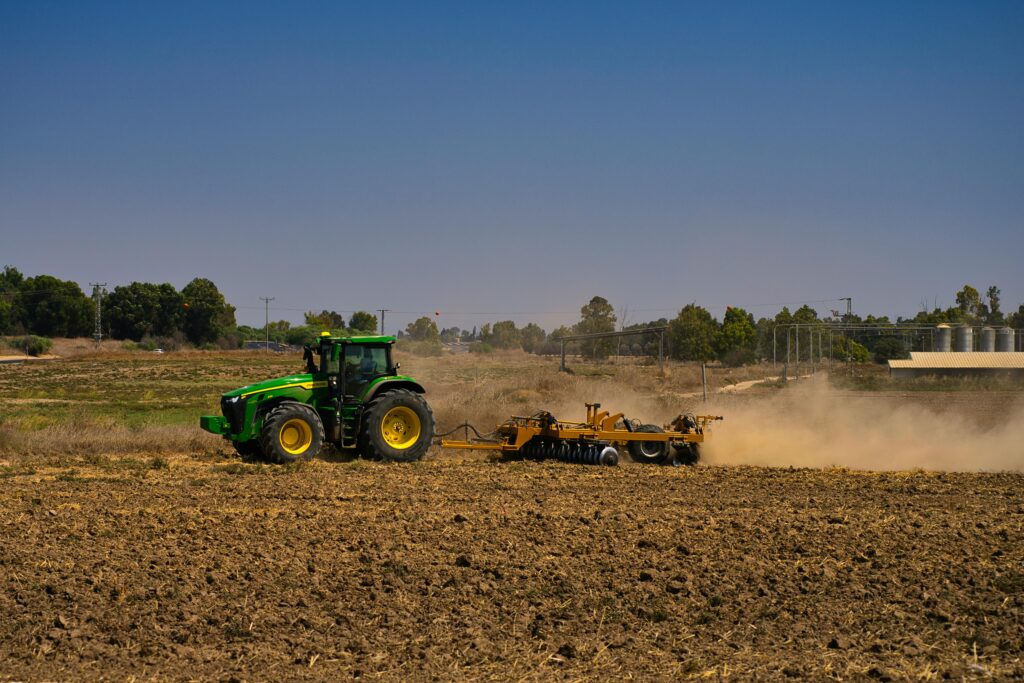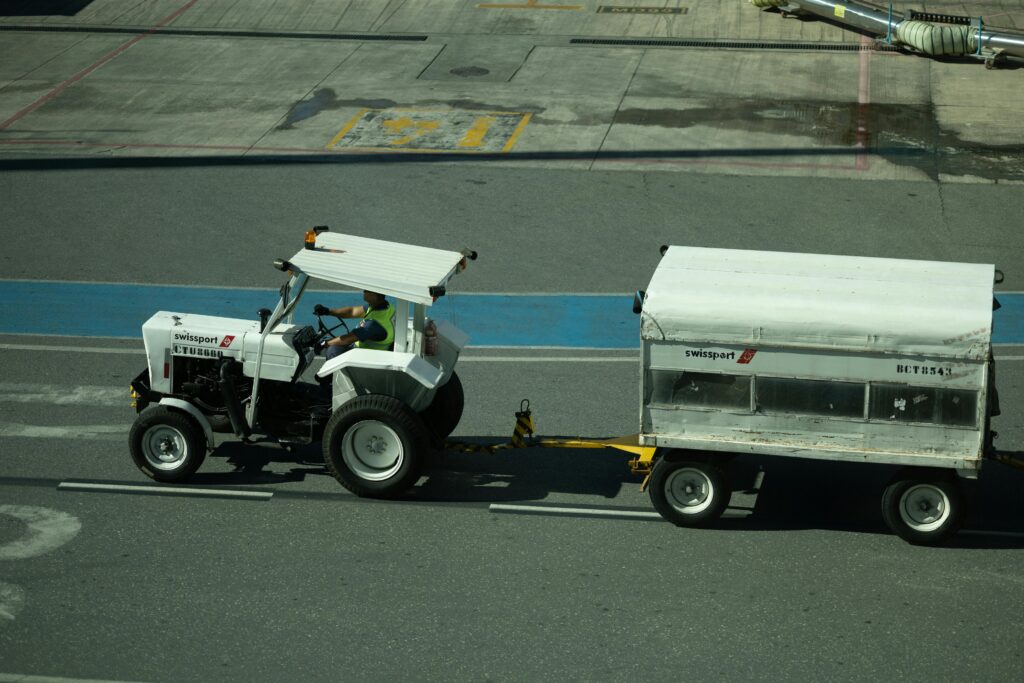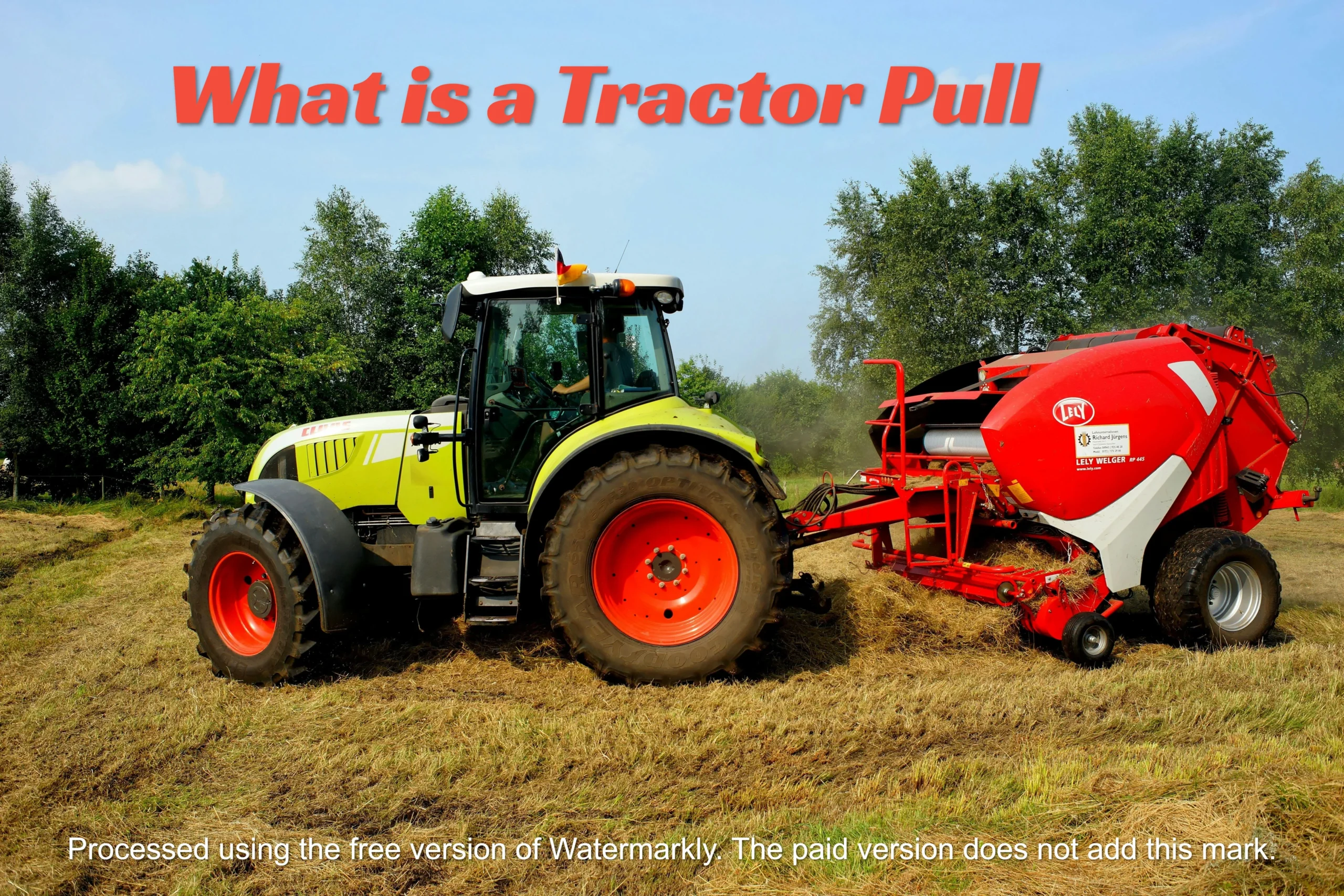A tractor pull is a competitive event where modified tractors or trucks pull a heavy sled along a specified distance. The sled contains a weight that moves towards the front of the sled as it is pulled, making it increasingly difficult for the tractor or truck to continue. The winner is the vehicle that pulls the sled the farthest distance. Tractor pulls are popular in rural areas and are often part of agricultural fairs and festivals.
Introduction
A tractor pull, also known as a truck pull or power pull, is a motorsport competition where heavily modified farm tractors or trucks are put to the test by hauling a massive weight transfer machine over a predetermined distance. This exhilarating event showcases the immense power and torque of these machines as they strain against the sled’s resistance, digging deep into the dirt and sending plumes of smoke into the air.
Tractor pulling events have been a beloved part of agricultural fairs and festivals for decades, captivating audiences with their raw display of power and engineering prowess. These competitions have evolved from humble beginnings into a highly organized and regulated sport, with various classes and divisions catering to different types of vehicles and engine configurations.
As you delve into the world of tractor pulls, you’ll discover a community of passionate enthusiasts who dedicate countless hours to modifying and fine-tuning their machines for optimal performance. From the deafening roar of the engines to the clouds of smoke billowing across the arena, a tractor pull event is a sensory experience that will leave you in awe.
The History of Tractor Pulls
Tractor pulls trace their roots back to the early 20th century when farmers would gather to test the pulling power of their tractors. These informal competitions quickly gained popularity and evolved into organized events, drawing larger crowds and more participants.
In the 1950s and 1960s, tractor pulling experienced a surge in popularity, with dedicated organizations and rulebooks emerging to standardize the sport. Manufacturers began producing specialized tractors designed specifically for pulling, pushing the boundaries of engineering and performance.
Over the years, tractor pulling has undergone significant transformations, with advancements in technology and safety measures ensuring a more competitive and engaging experience for both participants and spectators.
The Thrill of the Pull
The Machines
At the heart of a tractor pull event are the awe-inspiring machines that take center stage. These heavily modified tractors and trucks are engineered to deliver unparalleled power and torque, capable of hauling immense weights with remarkable resilience.
Tractor pulling enthusiasts pour countless hours and resources into modifying their machines, fine-tuning every component to extract maximum performance. From customized engines and transmissions to specialized tires and weight distribution systems, no stone is left unturned in the pursuit of victory.
Engine Modifications
One of the most significant aspects of a tractor pull machine is the engine. Participants often opt for massive diesel or gasoline engines, sometimes even repurposing engines from heavy-duty trucks or industrial equipment. These engines undergo extensive modifications, including turbocharging, fuel injection system upgrades, and advanced cooling systems, to extract every ounce of power.
Drivetrain and Suspension
The drivetrain and suspension systems of tractor pull machines are also heavily modified to handle the immense stresses and torque generated during the pull. Beefed-up transmissions, reinforced driveshafts, and specialized suspension components ensure that the power is transferred efficiently to the ground, maximizing traction and stability.
Tires and Weight Distribution
Tires play a crucial role in tractor pulling, as they are the only point of contact between the machine and the ground. Specialized tires with aggressive tread patterns and carefully calculated tire pressures provide the necessary grip and traction to propel the tractor forward. Weight distribution is also a key factor, with competitors meticulously adjusting weight distribution to optimize traction and minimize wheel slippage.
The Competition
Tractor pull competitions are divided into various classes based on factors such as vehicle type, engine size, and weight. These classes ensure a level playing field and promote fair competition among participants.
The objective of a tractor pull is simple yet challenging: pull a heavy sled as far as possible along a designated track. The sled is equipped with a weight transfer system that progressively increases the resistance as the tractor moves forward, making it increasingly difficult to maintain traction and momentum.
As the tractors strain against the sled’s resistance, the crowd erupts in cheers and applause, captivated by the spectacle of raw power and determination. The competition often comes down to mere inches, with drivers employing skilled throttle control and precision steering to eke out every last bit of traction.
Sled Design and Operation
The sled used in tractor pulls is a specialized piece of equipment designed to provide a progressive increase in resistance as the tractor pulls it forward. At the start of the pull, the sled’s weight rests primarily on its own wheels, allowing for relatively easy movement. However, as the tractor advances, a sophisticated weight transfer system shifts the sled’s weight onto a series of skid plates, creating a greater frictional force against the ground.
The weight transfer system is carefully calibrated to ensure a fair and consistent challenge for all competitors within a given class. Adjustments are made based on factors such as track conditions, vehicle weight, and engine power to maintain a level playing field.
Safety Measures
Tractor pulling events prioritize safety for both participants and spectators. Strict safety regulations are in place, including the use of roll cages, fire suppression systems, and specialized safety equipment for drivers. Additionally, designated safety zones and barriers ensure that spectators are kept at a safe distance from the pulling action.

The Spectacle and Atmosphere
Beyond the competition itself, tractor pull events are known for their festive atmosphere and family-friendly entertainment. Crowds gather from near and far, eager to witness the thunderous displays of power and skill.
Food vendors, merchandise booths, and interactive exhibits line the fairgrounds, creating a vibrant and immersive experience for attendees of all ages. Live music and other forms of entertainment often accompany the main event, adding to the celebratory ambiance.
For many, attending a tractor pull is an annual tradition, a chance to connect with like-minded enthusiasts and share in the excitement of this unique and thrilling motorsport.
The Art of Tractor Pulling
Driver Skill and Technique
While the machines themselves are undoubtedly impressive, the success of a tractor pull is heavily dependent on the skill and technique of the driver. These skilled operators possess a deep understanding of their machines, honing their abilities through countless hours of practice and experience.
Throttle control is a critical aspect of tractor pulling, as drivers must carefully modulate the engine’s power to maintain traction and prevent wheel spin. Too much throttle can cause the tires to lose grip, while too little can result in a loss of momentum.
Steering precision is also paramount, as even the slightest deviation from the ideal line can significantly impact the tractor’s performance. Drivers must constantly adjust their steering inputs to compensate for the changing weight distribution and resistance of the sled.
Weight Transfer and Traction Management
One of the most critical factors in tractor pulling is weight transfer and traction management. As the sled’s resistance increases, the weight distribution of the tractor shifts, impacting the amount of traction available at each wheel.
Drivers and pit crews meticulously analyze weight distribution patterns and make adjustments to the vehicle’s suspension, tire pressures, and ballast weights to optimize traction throughout the pull. This process involves a delicate balance, as too much weight on the drive wheels can cause them to dig into the ground, while too little weight can result in a loss of grip.
Preparation and Maintenance
Behind every successful tractor pull team is a dedicated crew of mechanics and support personnel. Proper preparation and maintenance are crucial to ensuring the machine’s reliability and performance during the competition.
Before each event, the tractor undergoes a thorough inspection and tuning process, with every component checked and adjusted for optimal operation. Engine tuning, fluid levels, and tire pressures are all carefully monitored to ensure peak performance.
During the event itself, pit crews work tirelessly to make any necessary adjustments or repairs, often under intense time constraints. Their expertise and attention to detail can mean the difference between victory and defeat.
The Tractor Pull Community
Enthusiasts and Fans
Tractor pulling events attract a diverse and passionate community of enthusiasts and fans from all walks of life. For many, the appeal lies in the raw power and spectacle of these machines, while others are drawn to the technical aspects and engineering challenges.
Fans eagerly follow the careers of their favorite drivers and teams, supporting them through social media, merchandise sales, and attending events across the country. The camaraderie and shared passion among the tractor pull community create a welcoming and inclusive atmosphere, fostering lifelong friendships and connections.

Manufacturers and Sponsors
The tractor pull industry is supported by a thriving ecosystem of manufacturers and sponsors. Leading agricultural and industrial equipment companies recognize the value of this sport as a platform to showcase their products and innovations.
These manufacturers often sponsor teams and events, providing financial support, specialized components, and technical expertise. In return, they gain valuable exposure and feedback from the tractor pull community, which can inform future product development and engineering advancements.
Youth Programs and Education
Recognizing the importance of fostering the next generation of tractor pull enthusiasts, many organizations and clubs have implemented youth programs and educational initiatives. These programs aim to introduce young people to the sport, teaching them about the mechanics, engineering, and safety aspects of tractor pulling.
Through hands-on activities, workshops, and mentorship opportunities, these programs nurture a passion for the sport and encourage the development of essential skills in areas such as mechanics, welding, and problem-solving.
The Future of Tractor Pulling
Technological Advancements
As technology continues to evolve, the tractor pull industry is poised to embrace new innovations that could further enhance the performance and safety of the machines. Advanced materials, such as lightweight composites and high-strength alloys, may be incorporated into tractor designs, reducing weight while maintaining structural integrity.
Advancements in engine technology, including more efficient turbocharging systems and alternative fuels, could lead to increased power outputs while reducing emissions. Additionally, the integration of advanced electronics and telemetry systems could provide real-time data analysis and performance monitoring, aiding in fine-tuning and optimizing the machines.
Sustainability and Environmental Considerations
As environmental concerns gain increasing prominence, the tractor pull community is actively exploring ways to reduce its carbon footprint and promote sustainability. Efforts are underway to develop more eco-friendly fuel alternatives, such as biofuels or hydrogen, to power these machines.
Additionally, organizers and participants are implementing sustainable practices, such as recycling programs and waste reduction initiatives, to minimize the environmental impact of tractor pull events.
Global Expansion and Outreach
While tractor pulling has traditionally been a predominantly North American sport, there is a growing interest and participation from other regions around the world. International organizations and events are emerging, fostering cross-cultural exchange and promoting the sport on a global scale.
Through outreach programs and media exposure, the tractor pull community aims to introduce the sport to new audiences and cultivate a broader appreciation for this unique and thrilling form of motorsport.

Conclusion
Tractor pulling is a unique and exhilarating motorsport that combines raw power, engineering prowess, and a passionate community of enthusiasts. From the thunderous roar of the engines to the clouds of smoke billowing across the arena, these events captivate audiences with their sensory spectacle and display of skill and determination.
As the sport continues to evolve, embracing technological advancements and addressing environmental concerns, the tractor pull community remains committed to preserving the rich tradition and excitement that have made this sport a beloved attraction for generations.
Whether you’re a seasoned enthusiast or a newcomer to the world of tractor pulling, attending an event is an unforgettable experience that will leave you in awe of the sheer power and ingenuity on display. So, mark your calendars, gather your friends and family, and get ready to witness the ultimate test of strength and endurance as these mighty machines take center stage.
| Engine Modifications | Examples |
|---|---|
| Turbocharging | Increased air intake for improved combustion |
| Fuel Injection Upgrades | High-pressure fuel delivery for better efficiency |
| Advanced Cooling Systems | Prevent overheating under extreme loads |
| Drivetrain and Suspension | Purpose |
|---|---|
| Beefed-up Transmissions | Handle immense torque loads |
| Reinforced Driveshafts | Withstand high stress and torsional forces |
| Specialized Suspension Components | Maintain stability and traction under shifting weights |
| Tires and Weight Distribution | Importance |
|---|---|
| Aggressive Tread Patterns | Maximize grip and traction on various surfaces |
| Optimized Tire Pressures | Improve weight transfer and traction efficiency |
| Strategic Ballast Placement | Distribute weight for optimal balance and control |
Remember, the world of tractor pulling is a constantly evolving one, with new innovations and advancements on the horizon. Stay tuned and get ready to witness the next chapter in this thrilling motorsport’s history!
FAQs
1. What are the different classes in tractor pulling?
Tractor pulling competitions are divided into various classes based on factors such as vehicle type, engine size, and weight. Some common classes include:
- Pro Stock Tractors: These are purpose-built tractors with highly modified engines and specialized components designed for maximum pulling power.
- Super Stock Tractors: Similar to Pro Stock Tractors but with smaller engine displacements and weight restrictions.
- Modified Tractors: These are farm tractors that have been extensively modified with larger engines and other performance upgrades.
- Light Pro Stock Trucks: Pickup trucks with heavily modified engines and suspensions, designed for pulling competitions.
- Super Stock Diesel Trucks: Diesel-powered trucks with engine modifications but adhering to stricter rules and regulations.
2. How are tractor pull tracks and sleds prepared?
Tractor pull tracks are carefully prepared to ensure consistent and fair conditions for all competitors. The surface is typically packed dirt or clay, which is graded and rolled to provide a level and firm pulling surface.
The sled used in tractor pulls is a specialized piece of equipment designed to provide a progressive increase in resistance as the tractor pulls it forward. The weight transfer system within the sled is calibrated based on factors such as track conditions, vehicle weight, and engine power to maintain a level playing field.
3. What safety measures are in place for tractor pulling events?
Tractor pulling events prioritize safety for both participants and spectators. Strict safety regulations are in place, including the use of roll cages, fire suppression systems, and specialized safety equipment for drivers.
Additionally, designated safety zones and barriers ensure that spectators are kept at a safe distance from the pulling action. Thorough vehicle inspections and safety checks are conducted before each competition to ensure the integrity and proper functioning of all components.
4. How do drivers and teams prepare for a tractor pull event?
Preparation is key for success in tractor pulling. Drivers and teams spend countless hours fine-tuning their machines, ensuring optimal performance and reliability.
Before each event, the tractor undergoes a thorough inspection and tuning process, with every component checked and adjusted for optimal operation. Engine tuning, fluid levels, and tire pressures are all carefully monitored and adjusted as needed.
Additionally, teams meticulously analyze weight distribution patterns and make adjustments to the vehicle’s suspension, tire pressures, and ballast weights to optimize traction throughout the pull.
5. What are the future prospects and challenges for the tractor pull industry?
The tractor pull industry faces both opportunities and challenges as it looks toward the future. Technological advancements, such as advanced materials, more efficient engines, and telemetry systems, offer the potential to enhance performance and safety while reducing environmental impact.
However, the industry must also address concerns related to sustainability and environmental considerations. Efforts are underway to develop more eco-friendly fuel alternatives and implement sustainable practices to minimize the carbon footprint of tractor pull events.
Additionally, the global expansion and outreach of the sport present both opportunities for growth and challenges in terms of promoting the sport to new audiences and fostering cross-cultural understanding and appreciation.

I have been surfing online greater than 3 hours today, yet I never found any attention-grabbing article like
yours. It is beautiful price sufficient for me. In my
view, if all webmasters and bloggers made excellent content material as you did,
the internet shall be much more useful than ever before.
Much Appreciated Paul for reading the content and appreciating it – thanks a lot for the kind words.
It is appropriate time to make a few plans for the longer term and it’s time to
be happy. I have learn this publish and if I may
just I wish to counsel you some interesting issues or suggestions.
Perhaps you could write next articles regarding this article.
I wish to learn even more things approximately it!
Thank you Tierra for the kind feedback – No one is complete and everyone needs some suggestions for the improvement.